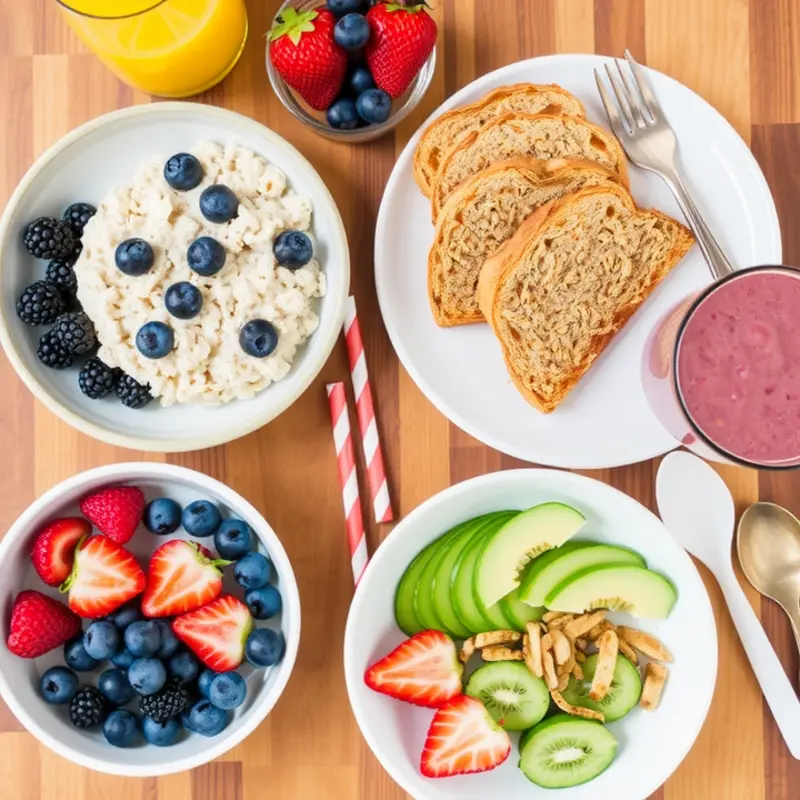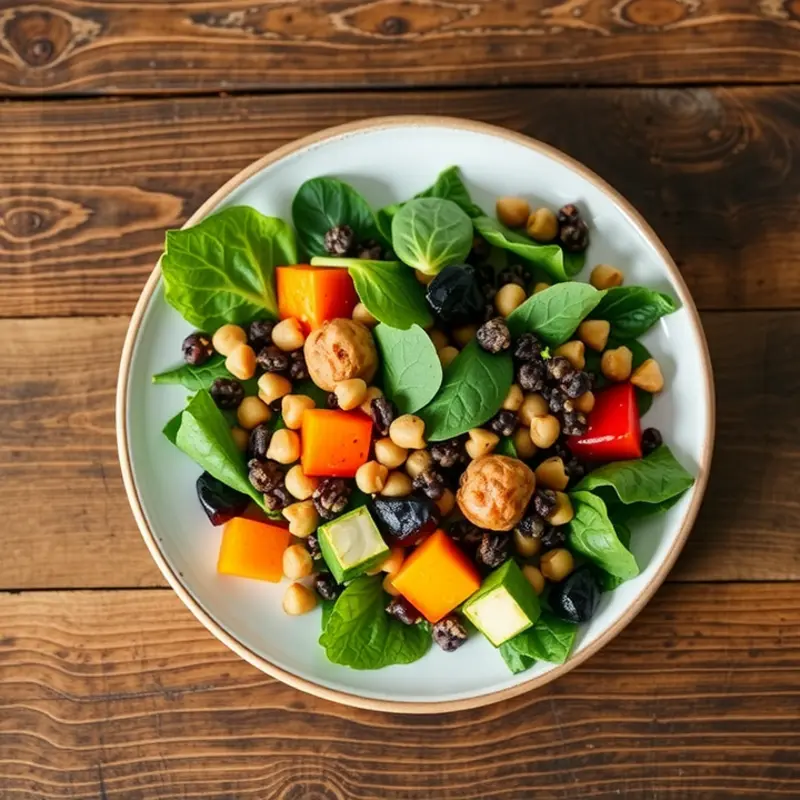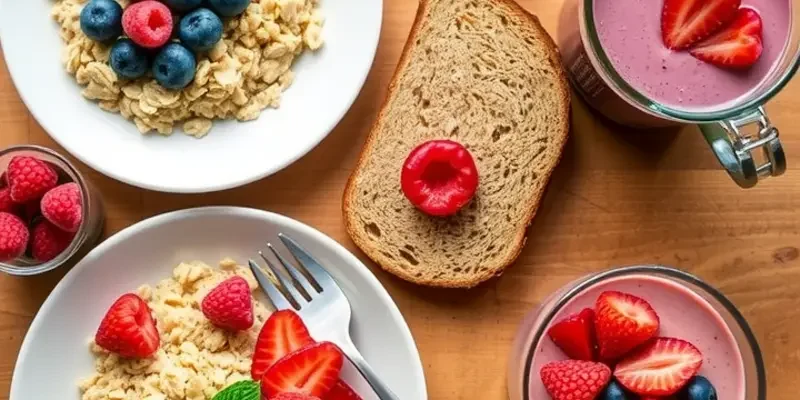Eating a fiber-rich diet is essential for maintaining good health. It supports digestion, helps regulate blood sugar, and can even lower cholesterol levels. However, if you’re new to nutrition, figuring out how to add fiber to your meals can feel overwhelming. Fortunately, it doesn’t have to be complicated! This guide offers easy and enjoyable ways to boost your fiber intake without sacrificing taste.
Fresh Ideas for Fiber-Rich Breakfasts

Breaking away from traditional breakfast options can inject much-needed fiber into your diet. Incorporating whole grains, vibrant fruits, and nutrient-packed seeds into your morning provides a balanced start without the fuss. Here are some simple ideas to elevate your first meal of the day.
Overnight Oats Delight
Begin with a base of rolled oats, a whole grain rich in soluble fiber. Soak them overnight in your preferred milk or yogurt. Add chia seeds, which swell to create a creamy texture while providing omega-3 fatty acids and impressive fiber content. Toss in nuts like almonds or walnuts for an additional fiber boost. Before serving, top with fresh berries. Berries are loaded with fiber, providing sweetness without extra sugar. You can also explore other non-dairy probiotic options to pair with your oats here.
Smoothie Bowls with a Twist
Turn a classic smoothie into a fiber-rich meal by using frozen bananas and a handful of spinach as a base. Spinach is mild but packs a good amount of fiber. Blend with Greek or plant-based yogurt, which adds creaminess and probiotics. For toppings, opt for sliced kiwis and pumpkin seeds. Pumpkin seeds not only offer a nutty crunch but are also a great source of fiber. Top with flaxseeds to enhance the fiber content and introduce a nutty flavor. Their soluble fiber adds thickness to the smoothie, keeping you full longer.
Whole Grain Pancakes
Replace refined flour with whole grain or almond flour in your pancake mix to boost fiber. During preparation, fold in grated zucchini or sweet potato. Although mild in taste, they subtly increase fiber without altering flavor drastically. Drizzle with a small amount of pure maple syrup and add a sprinkle of chopped pecans or fresh chopped fruits like pears, which are high in insoluble fiber. This combination ensures a flavorful and satisfying meal.
Avocado Toast Remix
Transform traditional avocado toast by layering it with fiber-rich toppings. Start with whole grain bread, adding texture and fiber compared to white bread. Top with smashed avocado, a naturally fiber-rich fruit. Add sliced radishes for a peppery crunch. Underneath it all, smear a thin layer of hummus for not only added fiber but a protein kick as well. For a final touch, sprinkle sunflower seeds or hemp hearts over the top. The additional seeds provide a crunchy texture and contain extra fiber that complements the creaminess of the avocado.
Making deliberate yet simple adjustments to your morning routine can make a significant difference in your daily fiber intake. By swapping simple ingredients and introducing high-fiber toppings, you can transform ordinary breakfasts into powerful meals. This helps sustain energy levels and supports digestive health, setting a positive tone for the rest of your day.
Lunch & Dinner: Easy Ways to Add More Fiber

Lunch and dinner present ideal occasions to enrich your meals with fiber, ensuring you stay full and satisfied. In this chapter, explore practical strategies to incorporate legumes, vegetables, and whole grains effortlessly into your culinary routine.
Consider legumes such as lentils, chickpeas, and black beans as versatile options for lunch. These are not only rich in fiber but are also excellent sources of protein. Easily add them to salads, soups, or stews. For a fiber-packed lunch, toss some chickpeas into your favorite salad. Their subtle nutty flavor complements a variety of dressings and adds a satisfying texture.
Meanwhile, don’t overlook the power of whole grains. Swap your regular rice with brown rice, quinoa, or bulgur. These grains are fiber-rich and cook quickly, making them convenient for hearty bowls or side dishes. A quinoa and black bean bowl with fresh vegetables and a touch of lime juice makes for a refreshing and nutrient-dense meal.
At dinner, it’s essential to expand your vegetable repertoire. Roasting vegetables is an easy way to enhance their flavors. Consider adding vegetables like Brussels sprouts, carrots, and sweet potatoes, which are naturally high in fiber. Roasted sweet potatoes, tossed in a light spice blend, create a delectable side dish perfect for pairing with baked or grilled proteins.
Transform your pasta dishes by choosing whole-grain or legume-based pasta. These alternatives provide a simple way to increase dietary fiber without altering the sauces or accompaniments you love. Couple this with a sauce rich in tomatoes, peppers, or spinach for an added nutritional boost.
For the adventurous, try incorporating spiralized vegetables instead of traditional pasta. Zucchini or carrot noodles can be tossed with a robust marinara sauce or creamy avocado dressing, making your meal both rich in fiber and exceptionally flavorful.
Lastly, enhance your dinner entrees with diverse legumes. Add lentils to your tomato sauces or casseroles. They blend effortlessly with flavors like garlic, basil, and oregano, providing a meaty texture. Embrace the culinary possibilities of plant-based meals by experimenting with different legumes and grains in your favorite recipes.
Meal prepping can streamline the incorporation of fiber-rich foods into your meals. Preparing batches of grains or roasted vegetables ahead of time ensures that they are readily available for quick lunches or dinners. If you’re keen to explore minimal prep possibilities, explore easy batch cooking tips for inspiration. You’ll find that with just a little planning, adding fiber to your meals becomes second nature.
Ultimately, boosting fiber intake at lunch and dinner doesn’t demand significant changes to meals you already enjoy. With these tips and a willingness to experiment, you can elevate the nutritional profile of your meals, supporting digestive health and overall well-being.
Final words
Incorporating fiber into your meals can be simple and delightful. By starting your day with fiber-rich breakfasts and including legumes and whole grains in your lunches and dinners, you not only enhance your nutrition but also enrich your palate. Remember that small swaps can lead to significant health benefits, so explore the tasty options available to you. Enjoy the journey toward a healthier diet, and embrace the vibrant flavors that fiber-rich foods provide. Your body will thank you!







